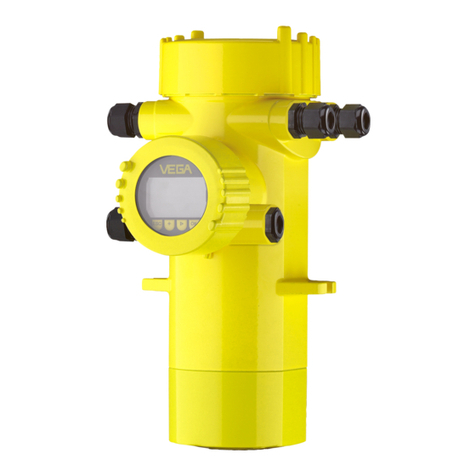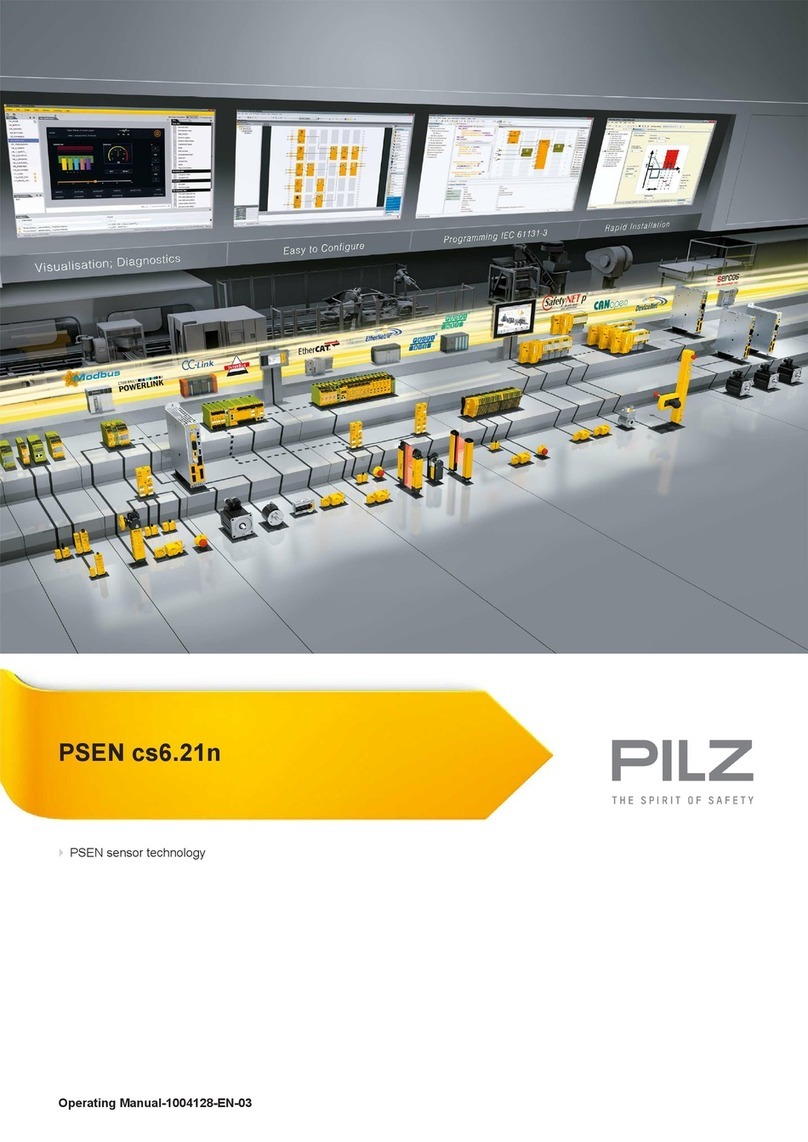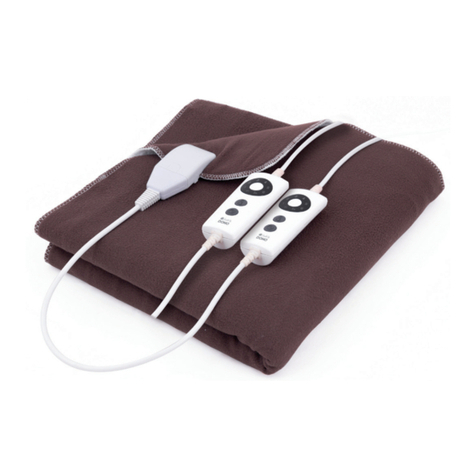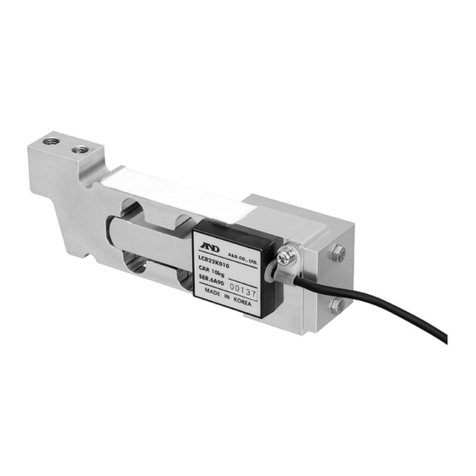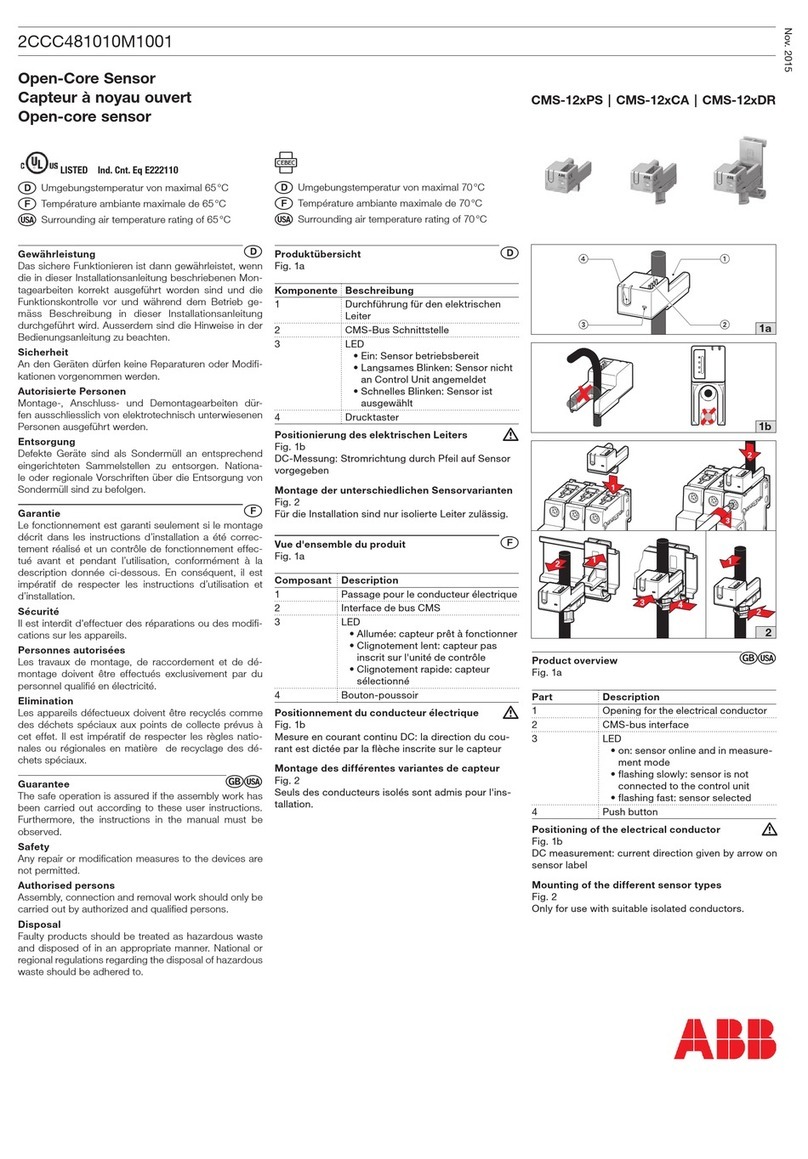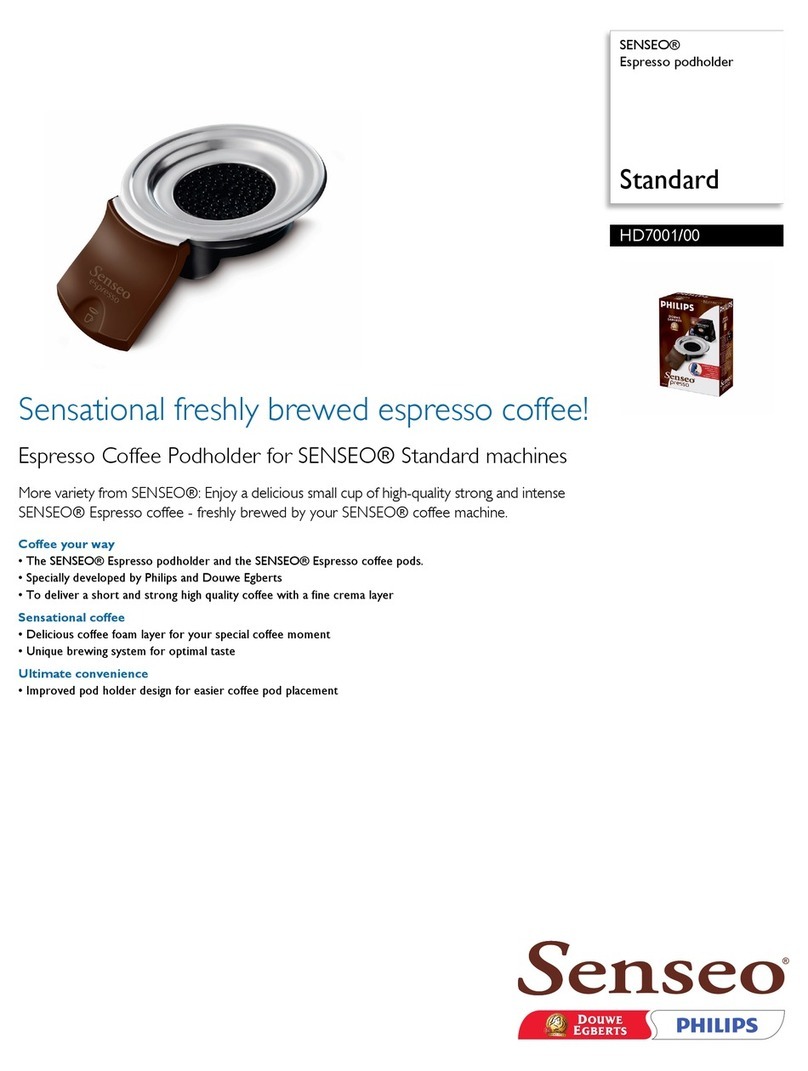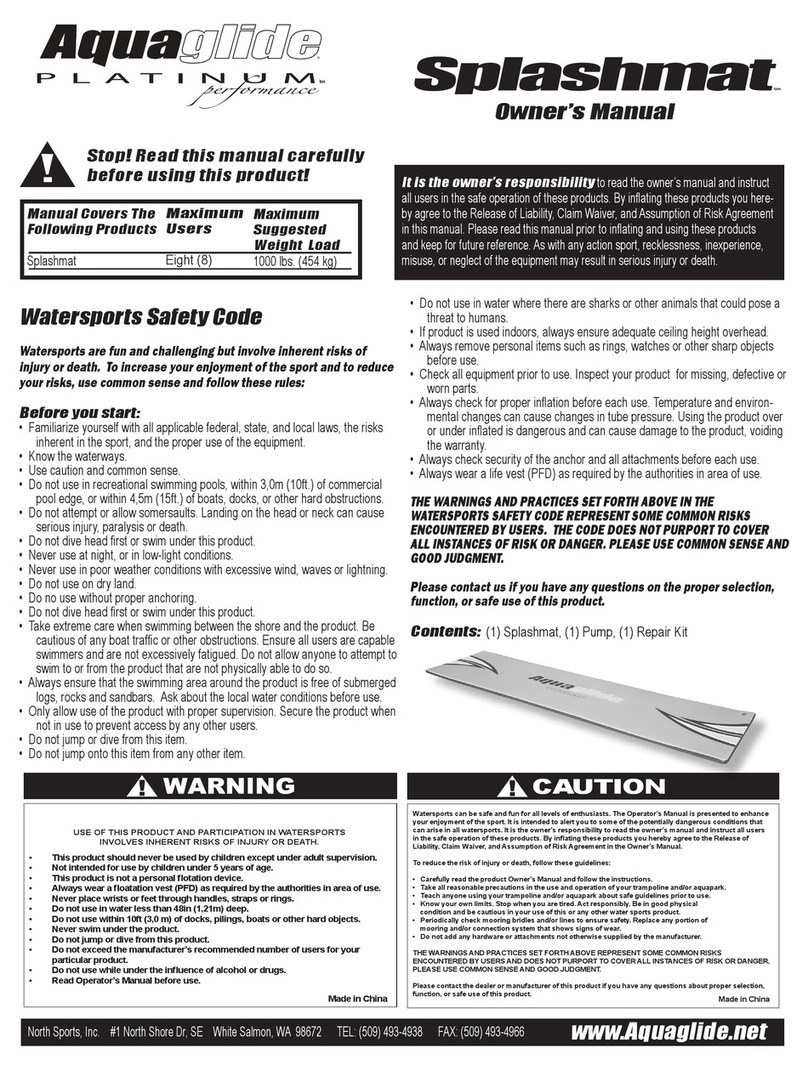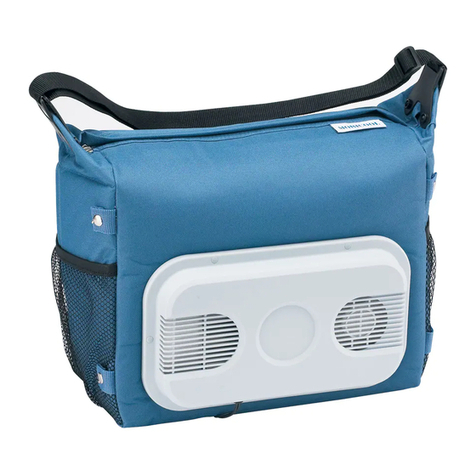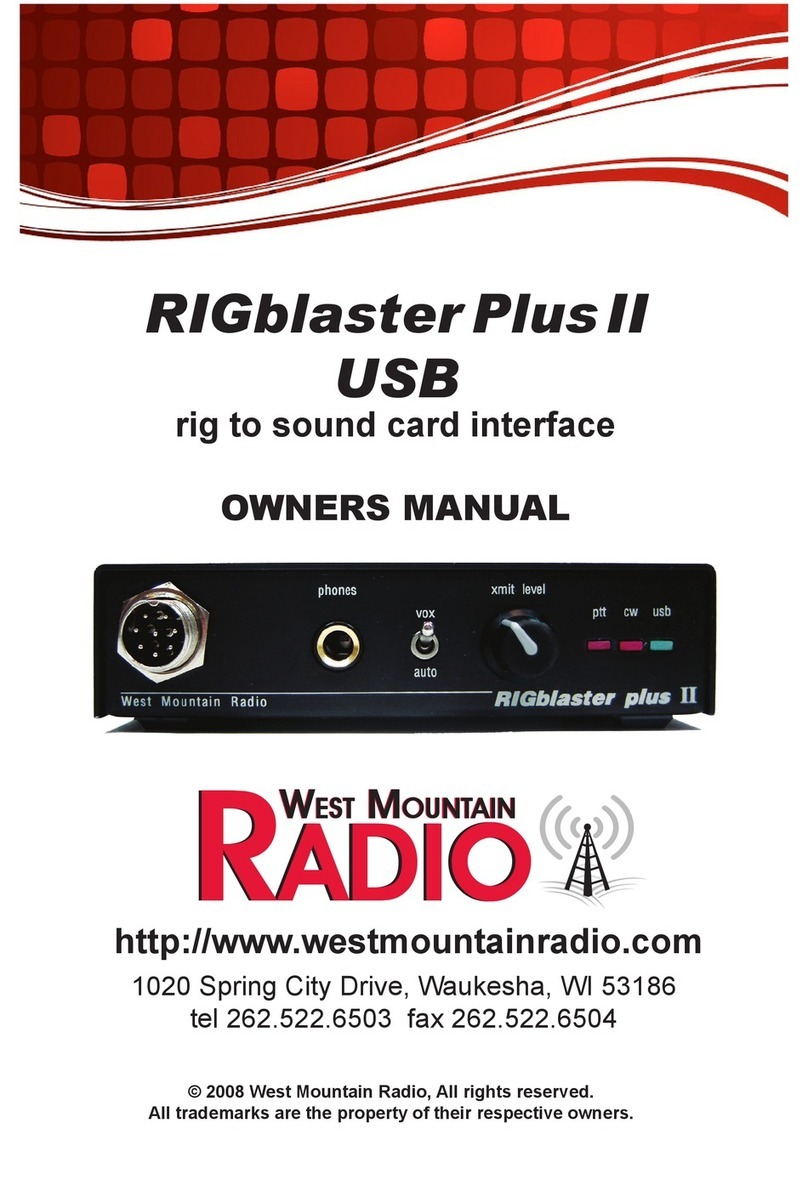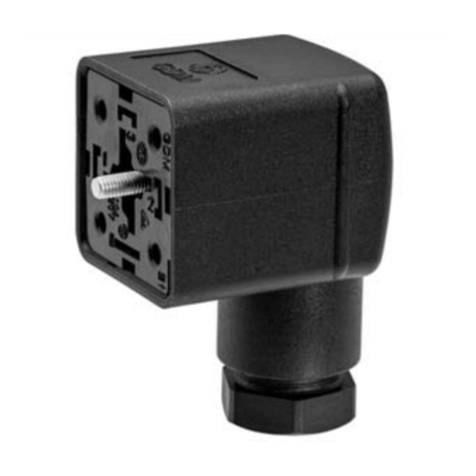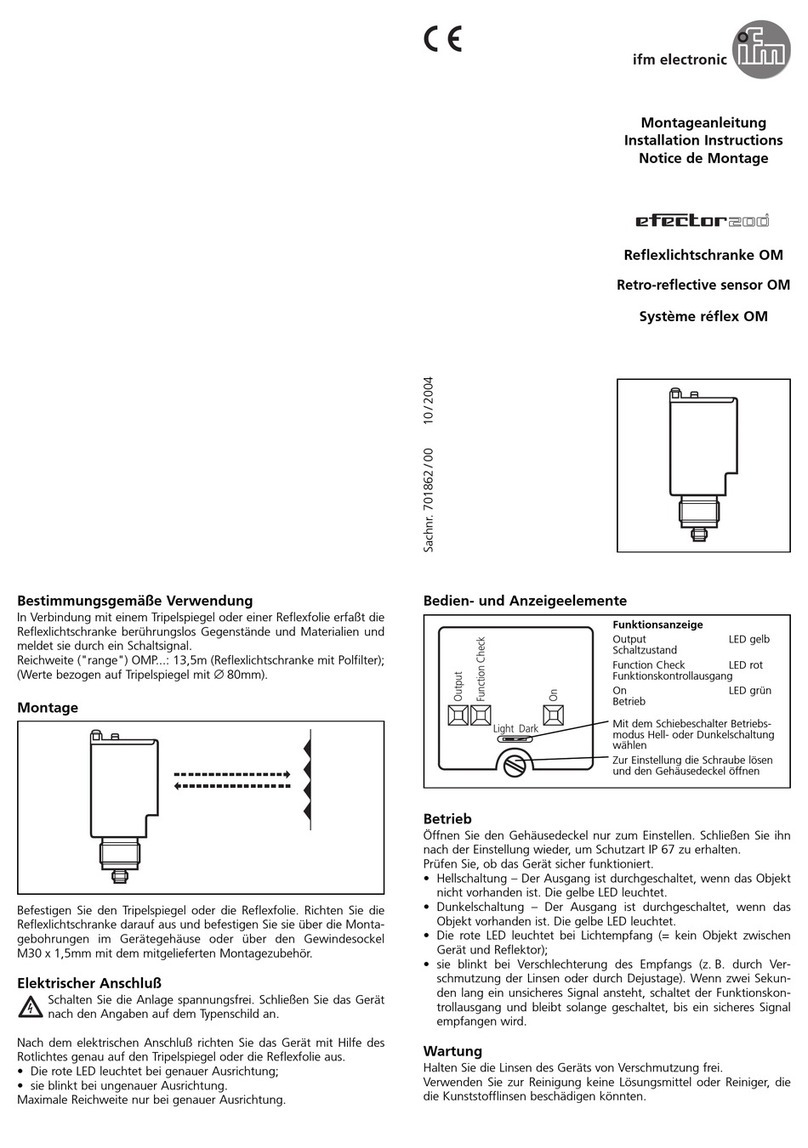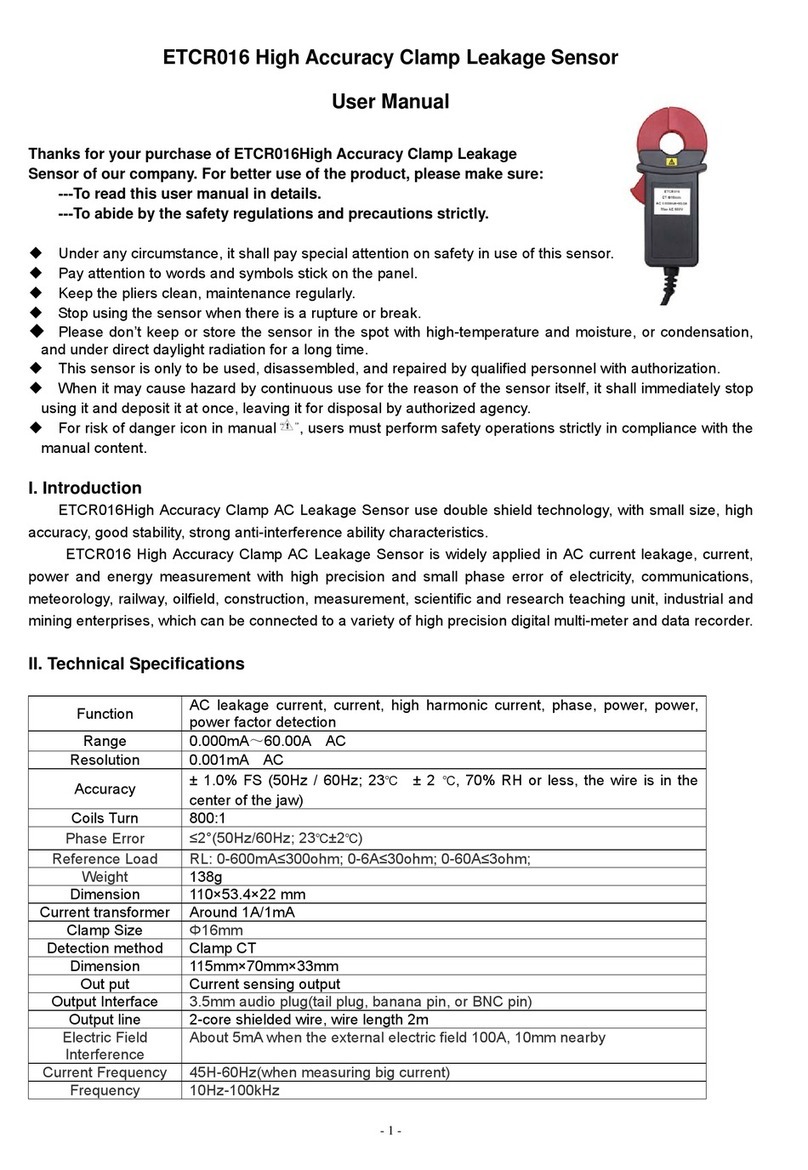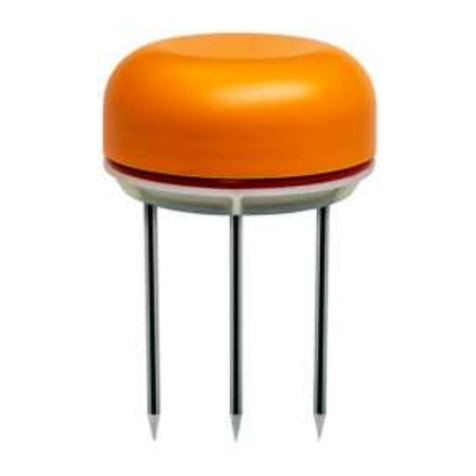TEVA TPA Series User manual

- 1 -
MANUAL DE SERVICIO
SERVICE MANUAL
TECNICAS EVAPORATIVAS, S.L. MS.80.00
Polg. Ind. Can Humet / Joan Mirò 1 / Polinyà (Barcelona) / Tel. 937 133 573 Fax. 937 133 160
abcde
•Expedición y manipulación
•Asentamiento y montaje
•Instalación
•Mantenimiento y recambios
•Shipment and lifting
•Placement and assembling
•Instalation
•Maintenance & spare parts
TORRES DE REFRIGERACIÓN Series TPA / TPAC
COOLING TOWERS Series TPA / TPAC

- 2 -
GENERALIDADES
El contenido de éste manual es aplicable a las torres de
refrigeración de las series TPA y TPAC, y deberá ser leído
atentamente por el personal técnico responsable, antes de la
manipulación de éstos equipos. La serie TPAC es una
versión con algunas dimensiones reducidas para adaptarla a
ser transportada en contenedor.
VERIFICACIONES
Para asegurarse de la ausencia de daños y/o pérdidas
durante el transporte, a la recepción del equipo, deberá
verificarse que los materiales entregados, relacionados en la
“Lista de contenido”, no presentan defectos tales como
mermas, golpes o deterioros en las superficies exteriores.
Cualquier anormalidad observada a la recepción del
equipo, deberá ser anotada en el documento de
recepción y comunicada urgentemente al suministrador
EXPEDICION Y MANIPULACION
Las torres correspondientes a éstas series, se expiden
divididas en módulos de dimensiones aptas para poder ser
transportadas. Cada módulo está compuesto por una sección
evaporativa (superior) y una sección de admisión de aire
(inferior). Bajo demanda y sólo para la serie TPA, la sección
inferior puede suministrarse con una bandeja de recogida de
agua.
Cada módulo (secciones superior e inferior) se expide en un
camión-trayler, ocupando la totalidad del mismo.
Cada módulo correspondiente a la serie TPAC ocupa un
contenedor completo del tipo “high cube” de 40 pies y está
dotado de ruedas para facilitar la entrada y salida del
contenedor.
Los elementos correspondientes al grupo moto-ventilador se
expiden por separado en el espacio interno y libre de la
sección inferior.
Todos los módulos están dotados de orejas para su
manipulación y emplazamiento con la ayuda de una grúa.
INTRODUCTION
The content of this manual is applicable to the cooling towers
series TPA and TPAC, it will be read thoroughly by the
responsible technical personnel, before the manipulation of
these equipment. The TPAC series is a version with some
reduced dimensions in order to adapt it to be transported in a
container
CHECKING
To make sure of the absence of damages and/or losses
during the transport, to the reception of the equipment, will be
verified that the delivered materials, reflected in the “Packing
List”, doesn’t present faults as incomplet delivery, crashes or
some damage in the external surface.
Any abnormality observed to the reception of the
equipment, it will be written down in the reception
document and communicated urgently to the supplier
SHIPMENT AND LIFTING
The towers corresponding to these models, are shipped
divided in modules with dimensions suitables to be
transported. Each module is composed by one evaporative
section (upper section) and one entrance aire section (lower
section). On demand and just for the TPA series, the lower
section can be supplied with a water basin.
Each module (upper and lower sections) is shipped in a truck
trailer, taking up the whole space of it.
Each module corresponding to the TPAC series takes up the
space of a “high cube” container of 40’’ and is equiped with
wheels in order to make easier the load and unload in the
container.
The elements corresponding to the fan-motor group are
shipped separatly, inside the lower section in the free space.
All the modules have been provided with lifting devices for
the manipulation and assembly with aid of a crane.

- 3 -
Pesos en expedición de las secciones (kg): / Shipped weights (kg):
Serie TPA / Series TPA
Seccion superior
Upper section Sección inferior
Lower Section
TPA TPA-SPL Sin balsa de agua
Without water basin Con balsa de agua
With water basin
Modelos
Models
Módulo extremo
External module
Módulo central
Central module
Módulo extremo
External module
Módulo central
Central module
Módulo extremo
External module
Módulo central
Central module
Módulo extremo
External module
Módulo central
Central module
80-
81-
82-
83-
84-
85-
86-
87-
88-
89-
1200
1200
1295
1295
1385
1385
1575
1575
1680
1680
1115
1115
1195
1195
1275
1275
1450
1450
1545
1545
1639
1639
1954
1954
2264
2264
2399
2399
2779
2779
1554
1554
1854
1854
2154
2154
2274
2274
2644
2644
470
470
470
470
470
470
520
520
520
520
295
295
295
295
295
295
305
305
305
305
810
810
810
810
810
810
940
940
940
940
645
645
645
645
645
645
740
740
740
740
Serie TPAC / Series TPAC
Seccion superior
Upper section Sección inferior
Lower Section
TPAC TPAC-SPL Sin balsa de agua
Without water basin Con balsa de agua
With water basin
Modelos
Models
Módulo extremo
External module
Módulo central
Central module
Módulo extremo
External module
Módulo central
Central module
Módulo extremo
External module
Módulo central
Central module
Módulo extremo
External module
Módulo central
Central module
82-
83-
84-
85-
86-
87-
88-
89-
1215
1215
1300
1300
1440
1440
1535
1535
1115
1115
1190
1190
1315
1315
1405
1405
1819
1819
2106
2106
2170
2170
2509
2509
1719
1719
1996
1996
2045
2045
2379
2379
465
465
465
465
510
510
510
510
290
290
290
290
300
300
300
300
--
--
--
--
--
--
--
--
--
--
--
--
--
--
--
--

- 4 -
ASENTAMIENTO Y ANCLAJE
Las torres de las series TPA y TPAC son de tipo multicelular,
pudiendo estar compuestas por una o varias celdas. Cada
celda está compuesta por dos módulos de distribución de
agua, con un solo ventilador común a ambos.
TORRES SOBRE BALSA DE HORMIGÓN
La situación de los pies de anclaje se indica en la Fig. 1.
PLACEMENT AND FASTENING
The TPA and TPAC cooling towers are multicell type, can be
composed by one or several cells. Each cell is composed by
two distribution water modules, with just one common fan.
TOWERS ON A CONCRETE BASIN
The location of the anchor points is indicated in the Fig 1
Modelos / Models DEF
TPA – 80 a 85 2315 2240 2250
TPA – 86 a 89 2915 2240 2250
TPAC – 82 a 85 2315 2040 2050
TPAC – 86 a 89 2915 2040 2050
Fig. 1

- 5 -
TORRES CON BALSA DE POLIESTER
Las torres suministradas con balsa de poliester (Solo serie
TPA) deberán soportarse sobre una estructura con vigas bajo
cada una de las balsas como se indica el el esquema
siguiente. Las balsas deberán interconectarse entre sí con el
fin de ecualizar los niveles entre ellas.
La situación de los pies de anclaje se indica en la Fig. 2.
TOWERS WITH POLYESTER WATER BASIN
The towers that will be supplied with polyester basin (just
available in TPA series) must be supported over a structure
with beams located under every of the basins, as shown in
the following draw. The basins must be interconnected
between them in order to equalize the water level between
them.
The location of the anchor points is indicated in the Fig 2.
Modelos / Models DE
TPA – 80 a 85 2315 2240
TPA – 86 a 89 2915 2240
Fig. 2
CONEXIONES / CONNNECTIOS:
1.
2.
3.
4.
5.
6.
7.
Entrada agua
Water inlet
Salida agua
Water outlet
By-pass balsas
Basins by-pass
Reposición
Make-up
Rebosadero
Overflow
Desagüe
Drain
Purga
Bleeding
8”
10”
6”
2”
3”
2”
1"
DIN 2576 PN16
DIN 2576 PN16
DIN 2576 PN16
roscada
threaded
roscada
threaded
roscada
threaded
roscada
threaded

- 6 -
ENSAMBLAJE
Para el ensamblaje de los diferentes módulos que componen
las torres de las series TPA y TPAC, deberá procederse en la
forma siguiente:
1º) SECCIONES INFERIORES
Colocar la sección inferior del módulo extremo sobre la
superficie nivelada del extremo de la balsa o base de anclaje,
suplementando los pies si fuese necesario, hasta conseguir
una perfecta nivelación del bastidor superior.
ASSEMBLING
For the asembly of the differents modules that form the TPA
and TPAC cooling towers, must to proceed as follow:
1º) LOWER SECTIONS
Place the external module of the lower section on the levelled
surface of the extreme of the basin or anchor base, adding
supplements down the feets if it’s needed until get a correct
levelling of the upper frame.
Colocar las secciones inferiores centrales atornillándolas
entre sí como se muestra en la figura siguiente.
Sellar la unión entre las secciones como se indica en el
detalle siguiente.
IMPORTANTE: Mantener una perfecta nivelación entre las
secciones inferiores para evitar desviaciones en las
secciones superiores.
Place the lowers central sections, screwing each other as it’s
shown in the following figure:
The union between sections must be sealed as it is indicated
in the following detail.
IMPORTANT: Keep a perfect levelling between the lowers
sections in order to avoid deviations in the upper
sections.

- 7 -
2º) SECCIONES SUPERIORES
Colocadas, atornilladas y ancladas todas las secciones
inferiores, se procederá a la colocación de las secciones
superiores, empezando por una de las secciones del
extremo, de forma que coincidan los taladros de la base con
los correspondientes de la sección inferior, ayudándose con
un punzón en cada frontal, si fuese necesario.
Estas primeras secciones, superior e inferior, del extremo,
deberán atornillarse entre sí para evitar posteriores
desplazamientos. Previamente habrá que eliminar la red
plástica que impide el desplazamiento del relleno durante el
transporte.
Para facilitar el acercamiento entre las secciones superiores,
los módulos están dotados de tres puntos reforzados en los
que mediante tres tornillos es posible dicho acercamiento.
Ver detalle “C” en página 8.
Una vez unidos dos módulos adosados atornillarlos entre sí
además de los tornillos que han servido para su
acercamiento, por los superiores indicados en los detalles “A”
cuando se trata de los módulos que conforman una celda y
según el detalle “B” cuando se trate de celdas adosadas.
2º) UPPER SECTIONS
Placed, screwed and anchored all the lower sections, the
upper sections will be emplaced, beginning by one of the
external sections, in such a way that the holes on the base
coincides with the holes of the lower section, helping with one
awl on each frontal, if it’s needed.
These first sections, upper and lower of the extreme module,
must to be screwed between them in order to avoid
subsequent displacements. Previously the plastic net that
prevent the movement of the filling during the transport must
be removed.
In order to make easier the approximation between the upper
sections, the modules are provided of three reinforced points
since where, through three screws makes possible the
mentioned approximation.
See detail “C” page 7.
Once two adjacent modules have been united and fixed the
screws used for the approximation between modules, the
superior part must be screwed on as indicated in detail “A”
when it comes to two modules that make up a cell and
according detail “B” when it comes to adjacent cells.

- 8 -

- 9 -
Cada unión entre módulos está cubierta por una tapa.
Previamente a la colocación de dicha tapa deberá sellarse la
unión para evitar posibles fugas de agua principalmente en la
parte inferior de las uniones donde se unen a la sección
inferior. Ver Fig. 3
Each junction between modules is covered by a cover.
Previously to the placement of the cover, the junction must be
sealed to prevent water leaks mainly in the lower part of the
joins where it’s unite with the lower section. See. Fig. 3
Es conveniente que cuando se finalice el montaje de cada
celda, se coloquen las barandillas, que servirán de protección
para posteriores operaciones sobre el techo de la torre.
La distribución de las barandillas se muestra en el esquema
siguiente:
When the assembly of each cell has been finalized, it’s
advisable to assemble the handrails, that will be useful as
protection in the followings assembly operations.
The distribution of the handrails is showed in the following
sketch:
Fig. 3

- 10 -
3º) GRUPO MOTOR-VENTILADOR
El grupo motor-ventilador-transmisión se suministra en un
conjunto con todos los elementos preparados, alineados y
con la tensión adecuada para la correa, por lo que no es
conveniente eliminar los anclajes de transporte Fig. 4
Anclajes de transporte
Anclajes….
Fig. 4
Eliminada la base de apoyo de la unidad, situar el conjunto en
su posición fijando los asientos de motor y ventilador
mediante los tornillos suministrados. Fig. 5
Sólo cuando ambos elementos estén bien sujetos a las vigas
de apoyo y no exista el riesgo de desplazamientos entre
ellos, eliminar los anclajes de transporte.
Conectar los cables eléctricos a la caja de bornes exterior
situada sobre el techo de la torre (Ver Fig. 11 en pag. 13).
Conectar los tubos de engrase de cada uno de los cojinetes
del ventilador a su correspondiente engrasador situado junto
a la caja de bornes.
Para efectuar las operaciones anteriores así como para la
colocación de las palas del ventilador, puede un operario
estar de pié sobre la superficie de los separadores de gotas,
colocando previamente un tablero de madera o similar de
aproximadamente 1 m2 .
4º) PALAS DEL VENTILADOR Y SU CARCASA
Situar cada pala sobre la abrazadera inferior de aluminio,
haciendo coincidir el número de la pala con el de la
abrazadera correspondiente. Ver Fig. 6.
El cuello de la pala estará siempre haciendo tope sobre la
parte interior de la abrazadera.
Montar la abrazadera superior y los abarcones, fijándolos de
manera que la pala pueda girar en la abrazadera, para poder
fijar el ángulo correcto de la misma.
Para la correcta dirección de rotación, ver Fig. 7
IMPORTANTE:
Las tuercas de los abarcones son especiales. No sustituirlas
por otras. Sólo pueden utilizarse las suministradas con el
ventilador.
3º) MOTOR-FAN SET
The motor-fan-transmision set is supplied as a kit with all the
elements ready, aligned and with the correct belt tension, for
wich it’s recommended don’t remove the transport anchorage.
Fig.4
Fig. 5
Remove the unit support, place the kit in its position, fix the
motor base and the fan by means the supplied screws. Fig 5.
Once both elements will be properly suject to the beam and
just when don’t exist risk of displacement between them,
remove the transport anchorage.
Connect the wires to the outside terminal box sited on the roof
of the tower (see Fig. 1 on pag. 13). Connect the lubrication
tubes of each bearing to its corresponding grease cup placed
next to the terminal box.
To execute the above mentioned operations as well as for the
assembly of the fan blades, can a worker stand over the drift
eliminators surface, putting previously on it a wood board or
similar of 1m2 approximately.
4º) FAN BLADES AND CASING
Put each blade on its lower aluminium clamp, in such a way
that the blade number match with the clamp number. See Fig.
6.
Ensure that the shoulder of the blade stem butts will be
always in the correct way against the rigid clamping piece.
Assemble the top clamp and the U-bolts, fix them leaving the
blades loose in such a way that the blade can turn, in order to
fix the correct blade angle.
For the correct rotation way, see Fig. 7.
IMPORTANT:
The nuts of the U-bolts are specials, don’t replace by another.
Just can be used the nuts supplied with the fan.

- 11 -
Abarcón Abrazadera superior
U-bolt Top clamp
Angulo pala
Pala Blade angle
Blade 1452
Cubo / Hub Abrazadera inferior
Lower clamp
Brida de acoplamiento
Coupling flange
Fig. 6
Fig. 7
Comprobar que los abarcones formen un ángulo recto con el
cubo del ventilador. Fijar el ángulo de las palas con los
grados marcados sobre la arandela de fijación del cubo como
se muestra en la Fig. 7.
Con la ayuda de una llave dinamométrica calibrada apretar
las tuercas de los abarcones a una presión de 60 Nm.
Durante el apriete comprobar que no se modifique el ángulo
de la pala y asegurarse que el cuello de la pala siga haciendo
tope en el borde interior de la abrazadera.
La carcasa del ventilador se suministra desmontada en
sectores que deberán situarse sobre el techo de la torre
alrededor del ventilador y atornillados en las tuercas situadas
sobre el techo de la torre.
La distancia que debe mantenerse entre el final de las palas
del ventilador y su carcasa, variará entre 10 y 15 mm.,
debiendo controlar, haciéndolo girar manualmente, que esto
se cumple en todo el recorrido del las palas del ventilador, y
desplazando los sectores de la carcasa hasta ajustarlos a
dicha dimensión.
Check that the U-bolts form a right angle with the fan hub.
Fix the blade angle with a degrees level, as is shown in the
Fig. 7.
With the help of a calibrated dynamometric wrench, tighten
fairly the U-bolt nuts, until 60 Nm of pressure. During the
tightening, take under control that don’t change the blade
angle and ensure that the stem buts continue in the correct
way against the rigid clamping piece.
The fan casing is supplied dismantled in several sectors that
will have to be situated on the roof of the tower, around the
fan and screwed to the nuts placed on the roof of the tower.
The distance that must be keep between the end of the fan
blades and its casing, will fluctuate between 10 and 15 mm.
Making turn around by hand and verify that is carried out by
all the blades in whole the fan route, and moving all the
casing sectors until adjust it to mentioned dimension.
1452
A. Fin pala / Tip blade
B. Angulo pala / Blade angle
C. Borde ataque / Leading edge
D. Borde salida / Trailing edge
E. Dirección aire / Direction of the flow
F. Sentido rotación / Direction of rotation

- 12 -
INSTALACIÓN
EMPLAZAMIENTO
Siendo las torres de refrigeración aparatos que necesitan una
abundante alimentación de aire, la consideración más
importante que se ha de tener presente en la elección de su
emplazamiento, es que exista una libre circulación de aire
para que sus prestaciones no se vean comprometidas. El
mejor emplazamiento para una torre de refrigeración, es
situarla a los cuatro vientos, sin obstáculos alrededor. Sin
embargo cuando esto no es posible, será necesario respetar
algunas normas esenciales:
Evitar la recirculación del aire. El aire saturado de humedad a
la salida de la torre, debe poder dispersarse libremente en la
atmósfera. Si una parte de éste aire fuese aspirado
nuevamente por la torre, la eficacia de la misma disminuiría
con respecto a las condiciones de proyecto al modificarse la
temperatura húmeda del aire.
Debe evitarse en primer lugar colocar la torre cerca de
paredes u otros obstáculos más altos que la torre misma.
(Ver figuras 8 a 10.). En el primer caso el viento dominante
empujaría al aire contra la pared, recirculando parte del
mismo. En el segundo, la depresión creada por la velocidad
del viento en la parte inferior de la torre, ocasionaría el mismo
fenómeno. Esta situación puede subsanarse elevando la torre
hasta el nivel de la pared vecina.(Ver figura 10).
Fig. 8 Fig. 9
A los efectos de aspiración de aire, es necesario mantener
una separación mínima ( D ) entre la torre y la pared
adyacente, de forma que el aire no supere la velocidad de 2.5
m/s. Esta distancia se puede calcular con suficiente
aproximación mediante la formula siguiente:
Siendo: C = Caudal de aire de la torre (m3/s)
P = Perímetro de la torre (m)
INSTALATION
LOCATION
Cooling towers need a plentiful supply of air. Therefore the
most important consideration that has to be borne in mind
when choosing where to locate them is the existence of a
supply of freely circulating air that will ensure that their
performance is not impaired. The best place to put up a
cooling tower is right out in the open, without any obstacles
round it. However, when this is impossible, there are certain
essential rules that must be observed:
Avoid recycling the air. The air saturated with humidity that
comes out of the tower must be freely dispersed into the
atmosphere. If part of this air is taken back into the tower, its
efficiency will diminish in comparison with its performance in
the conditions laid down in the project, as the humid
temperature of the air will be different.
The first requirement is not to situate the tower near any walls
or other obstacles that are higher than the tower itself (see
figures 8 to 10). In the former case, the prevailing wind will
push the air against the wall, causing part of it to be re-
circulated. In the latter case, the depression created by the
wind speed at the bottom of the tower will produce the same
phenomenon. Where such proximity is unavoidable, this
problem can be overcome by raising the tower to the height of
the nearby wall (see figure 10).
Fig. 10
To ensure an adequate air intake, a minimum distance (D)
must be maintained between the tower and the adjacent wall
so that the air speed does not exceed 2.5 m/s. This distance
can be calculated to a sufficient degree of accuracy using the
following formula:
Where: C = The cooling tower air flow (m3/s)
P = The perimeter of the tower (m)
C
D = -----------
2.5 P

- 13 -
Instalaciones con múltiples unidades
Al instalar próximas entre sí varias torres, será necesario
evitar que el funcionamiento de cada una no influencie sobre
las otras, para ello será necesario situar todas las salidas de
aire húmedo al mismo nivel, elevando si es preciso la torre de
menor altura, evitando con ello que el aire de la inferior sea
absorbido por la superior.
Las distancias mínimas a mantener entre dos torres
instaladas en batería, puede calcularse aplicando la anterior
fórmula pero sustituyendo el término 2.5 P por 1.5 P.
Cuando la instalación esté compuesta de un elevado número
de unidades, las descargas de aire húmedo crean un área en
el que la temperatura húmeda del aire puede ser
sensiblemente superior a la de proyecto, principalmente para
las unidades situadas en el centro. En éstos casos las
distancias anteriormente indicadas deberán incrementarse en
función del número de unidades, orientación, etc. Nuestra
Oficina Técnica está a su servicio para cualquier información
requerida.
CONEXIONES HIDRÁULICAS
Por cuanto se refiere a las conexiones hidráulicas,
dependerán en gran parte de cada instalación y no es posible
dar reglas fijas. No obstante es importante tener presente lo
siguiente:
1. La conexión de entrada de agua caliente a la torre
deberá estar situada en el punto más alto del circuito
para evitar que a la parada de la bomba, parte del
volumen de agua del circuito retorne por gravedad a la
torre. Si esto ocurre, gran parte del agua será eliminada
por el rebosadero, y al reiniciarse la marcha, el nivel de
agua en la balsa bajará en la cantidad equivalente al
volumen desaguado, pudiendo producirse fenómenos de
cavitación en la bomba.
2. Las tuberías deberán dimensionarse adecuadamente y
apoyarse sobre soportes de forma que no ejerzan
esfuerzo alguno sobre la torre. (peso, dilataciones, etc.)
Multiple unit installations
When installing several towers close to each other, it is
essential to ensure that they do not interfere with one another
while they are operating. All the humid air outlets should
therefore be situated at the same height, raising the height of
the lower tower(s) if necessary in order to prevent the air from
the lower one(s) being taken in by the higher one(s).
The minimum distance to be maintained between any two
towers in a battery arrangement can be calculated using the
formula given above but allocating P a value of 1.5 instead of
2.5.
When a large number of units are installed together, the
humid air discharges create an area in which the humid
temperature of the air may be significantly higher than the
project temperature, especially around the units in the middle
of the cluster. In such cases, the distances given above need
to be increased depending on the number of units, how they
are arranged, etc. Our Engineering Office will be glad to help
you with any queries you may have.
HYDRAULIC CONNECTIONS
The hydraulic connections required will depend to a large
extent on the particular installation. It is not possible to lay
down any hard and fast rules. Never the less, it is important to
bear in mind the following points:
1. The tower’s hot water inlet should be situated at the
highest point of the circuit to prevent part of the volume
of water in the piping from returning to the tower as a
result of gravity when the pump stops. If this happens, a
large part of the water will be lost through the overflow
and when the pump starts up again the level of water in
the basin will fall by an amount equivalent to the
overflowed water, which could cause cavitation in the
pump.
2. The pipes must be appropriately dimensioned and
supported in such a way that they do not exert any
pressure on the tower (weight, expansion, etc.)
3. La bomba deberá seleccionarse con la máxima exactitud
posible y su presión debe calcularse con la máxima
precisión. Si la bomba tiene una presión inadecuada por
demasiado alta o demasiado baja, con relación a la
resistencia hidráulica del circuito, su caudal resultará
diferente del previsto y las prestaciones de la torre se
verán comprometidas.
4. The pump must be selected as accurately as possible
and its pressure calculated with the utmost precision. If
the pump pressure is not right, either because it is too
high or because it is too low, for the circuit’s hydraulic
resistance, the actual flow will differ from the planned flow
and the performance of the tower may well be adversely
affected.

- 14 -
Con caudales excesivamente bajos la distribución del
agua es deficiente y con caudales excesivamente altos
puede superarse el límite que es capaz de desaguar el
relleno, con lo que la torre quedaría anegada impidiendo
el paso del aire.
La bomba deberá situarse a un nivel inferior al de la
conexión de aspiración de la torre, para evitar que las
fluctuaciones de nivel en la balsa puedan provocar la
entrada de aire en el circuito.
4. Es conveniente prever válvulas de paso en todas las
conexiones de entrada y salida de forma que faciliten la
eventual manutención y puedan servir para igualar
diferencias de caudal en los diferentes módulos.
5. En las torres con balsas de poliester es necesario
interconectar las diferentes balsas mediante conexiones
de by-pass para igualar las diferencias de nivel entre las
mismas.
CONEXIONES ELÉCTRICAS
En las torres de las series TPA y TPAC la caja de bornes de
los motores colocados en el interior de la torre se ha
trasladado al exterior, sobre el techo de la torre misma lo que
facilita su conexión eléctrica.
El conexionado variará según el automatismo que se haya
previsto para la torre, (variador de frecuencia, arranque
suave, estrella-triágulo, etc..). La caja de bornes, similar a la
representada, está dotada además de las conexiones del
motor y de la toma de tierra de:
1. Resistencias calefactoras que deberán conectarse
durante los periodos de paro del motor, evitando
condensaciones en su interior.
2. En los modelos con motor de 37 kW o superior, los
motores están dotados de termistores PTC para
protegerlos de sobrecalentamientos.
En cualquier caso, todas las conexiones eléctricas deben
realizarse respetando la normativa vigente en la materia.
Fig. 11
If the flow is too low, water distribution will inadequate. If,
on the other hand, it is too high, it may exceed the rate
at which the filling surface is capable of getting rid of it,
causing the tower to become flooded and blocking the
air flow.
The pump should be situated below the level of the
tower’s water inlet so as to prevent fluctuations in the
level of the basin from causing air to enter the circuit.
4. It is advisable to fit flow valves at all the inlet and outlet
connections to facilitate maintenance and equalise the
flow differences in the different modules.
5. In the towers with polyester basin it is also necessary to
interconnect the different basins by means of wide by-
pass pipes to equalise the levels between them.
ELECTRICAL CONNECTIONS
In the TPA and TPAC series towers, the terminal box for the
motors placed inside has been moved to the outside of the
tower, on the roof of the same one to facilitate connection to
the power supply.
The connections an change according the automatism that
has been previst for the tower, (inverter control, soft start,
start-delta starting, etc…). The terminal box, similar to the
represented, are equiped besides the motor connections and
connection to ground with:
1. Electric heatings that should be connected during the
shutdown periods, avoiding condensations in the inside
2. On models with motor power of 37 kW or more, the
motors are equipped with PTC thermistors in order to
protect them from overheating
In any event, all electrical connections must be made in
accordance with the relevant standards and regulations in
force at the time.

- 15 -
PRIMERA PUESTA EN MARCHA
Antes de la primera puesta en marcha de las torres series
TPA y TPAC, efectuar las operaciones siguientes:
1. Limpiar y en caso necesario lavar la balsa de recogida de
agua eliminando todo tipo de suciedad.
2. Llenar de agua fría la balsa hasta un nivel de 2/3 cm por
debajo del nivel del rebosadero.
3. Regular la válvula a flotador para que cierre al nivel
alcanzado en el punto anterior.
4. Poner en marcha las bombas de recirculación de agua y
ajustar el caudal a la presión correspondiente a las
condiciones de trabajo.
5. A través de la puerta de inspección, controlar que todas
las boquillas tengan una distribución regular, eliminando
si procede, las suciedades que pudieran haberse
arrastrado durante el proceso de instalación de las
tuberías.
6. Hacer girar manualmente los ventiladores asegurándose
de su libre rotación.
7. Poner en marcha los motores de los ventiladores y
verificar visualmente su correcto funcionamiento:
•Ausencia de ruidos anormales
•Ausencia de vibraciones
•Sentido de giro. Ver Fig. 7 en Pag. 11
8. Controlar la tensión y la intensidad de las tres fases del
motor. La intensidad deberá ser inferior a la nominal del
motor, correspondiente a la tensión a que esté
conectado.
A LAS 48 HORAS DE FUNCIONAMIENTO:
Después de las primeras 48 horas de funcionamiento, y una
vez que la torre y las bombas hayan parado y vuelto a
arrancar:
1. Verificar la ausencia de ruidos anormales y de
vibraciones.
2. Inspeccionar el buen funcionamiento de las boquillas
rociadoras.
3. Reapretar los abarcones con el fin de obtener los
momentos de ajuste iniciales.(60 Nm)
4. Controlar el nivel de agua en la bandeja y reajustar
la válvula a flotador si fuese necesario.
INITIAL START-UP
Before starting up the TPA and TPAC towers for the first time,
the following operations must be carried out:
1. Clean and, if necessary, wash the sump to get rid of all
the dirt.
2. Fill the sump with cold water up to a level of between 2/3
cm beneath the level of the overflow.
3. Adjust the float valve so that it closes at the level reached
in point 2 above.
4. Start up the water recycling pumps and adjust the flow so
that the pressure gauge at the inlet to the tower shows
the stipulated pressure for normal operating conditions.
5. Through the inspection door, make sure that the water is
distributed evenly by all the nozzles and eliminate, if
necessary, any dirt that has got in while the pipes were
being installed.
6. Spin the fans round by hand to make sure that they rotate
freely.
7. Start up the fan motors and visually check that they are
working properly
•No unusual noises.
• No vibrations
•Direction of rotation. See Fig. 7 on page 11
8. Test the voltage and the intensity of the motor’s three
phases. The intensity should be less than the motor’s
rated intensity, corresponding to the voltage to which it is
connected.
48 HOURS AFTER START-UP
After the tower has been running for 48 hours, stop the tower
and the pumps, start them up again and then:
1. Make sure that there are no unusual noises or vibrations.
2. Inspect the spray nozzles to check that they are working
properly.
3. Re-press the U-bolts in order to obtain the initial
moments of adjustment. (60 Nm)
4. Check the level of the water in the tray and readjust the
float valve if necessary.

- 16 -
MANTENIMIENTO
OPERACIONES DE MANTENIMIENTO
En la tabla siguiente se indican las operaciones que es
conveniente efectuar para mantener las torres en las mejores
condiciones de servicio.
MAINTENANCE
MAINTENANCE OPERATIONS
The following table shows the operations that it is advisable to
carry out in order to maintain the towers in the best working
order.
Descripción de la operación
Descrption of service Mensual
Monthly Semestral
Semestral Paro largo
Shut Down Reinicio
Start-Up
Inspección general del aparato
Inspect general condition of unit
Limpieza y lavado de la bandeja
Cleaning and laundry of the basin (1)
Limpieza del filtro
Cleaning sump strainer
Regular nivel de agua en la bandeja
Adjust sump water level
Comprobar funcionamiento válvula a flotador
Check make-up float valve
Revisar superficie del relleno
Inspect heat transfer section for fouling
Revisar boquillas y sistema de distribución de agua
Check spray nozzles and water distribution system
Comprobar calidad del agua
Check water quality (2)
Comprobar y regular consumo por purga de agua
Check and adjust bleed rate (3)
Revisar separadores de gotas y su ajuste
Check and adjust drif eliminators
Vaciado de bandeja y circuito
Drain sump and piping
Comprobar ruidos y vibraciones anormales
Check unusual noise and vibrations
Comprobar consumo de los motores
Check motors current
Comprobar la libre rotación de los ventiladores
Check impeler for rotation without obstruction
(1) Para evitar la acumulación de agua estancada en la
balsa por efectos de la lluvia, dejar la conexión de
desagüe abierta durante las paradas de larga duración.
(2) Seguir las normativas existentes en cada región o país.
(3) Mantener los parámetros establecidos por los técnicos
en tratamiento del agua en función de la calidad de la
misma.
(1) To prevent stagnant water from building up in the basin
as a result of rainfall, leave the drain open whenever the
towers are not in use for any appreciable length of time
(2) Follow the current standards of each region or country.
(3) Keep the parameters established by the water treatment
technicians in function of the quality of the water

- 17 -
RECAMBIOS
Los principales elementos que por desgaste o accidente son
susceptibles de sustitución son los siguientes:
Relleno de intercambio
Las torres de las series TPA y TPAC pueden ir equipadas con
dos diferentes tipos de relleno:
•TEVAfilm, formado por láminas de PVC encoladas entre
sí. Es adecuado tipo lpara aguas limpias y temperaturas
moderadas.
•TEVAplash, formado por paneles inyectados en
polopropileno. Es adecuado para aguas sucias y/o
temperaturas elevadas. (Modelos de torres con sufijo
SPL).
Ambas versiones forman bloque manejables que son
fácilmente extraibles. Ver Fig. 12.
Fig. 12
Separadores de gotas
Su función es la de retener las pequeñas gotas que son
arrastradas por la corriente de aire. Para cumplir su función
con eficacia, es preciso que los diferentes bloques ajusten
perfectamente entre sí, no dejando grietas entre ellos.
Su extracción, como en el caso del relleno, puede efectuarse
con facilidad a través de la puerta de inspección. Ver Fig. 13.
Colectores y Boquillas rociadoras
La homogénea distribución del agua sobre la superficie de
intercambio es uno de los parámetros de gran importancia en
las torres de refrigeración.
En las series TPA y TPAC se han adoptado TIPOS boquillas
de baja presión, del tipo a salpicadura, roscadas sobre
colectores laterales de polipropileno (800221). Estos
colectores se unen a un colector principal metálico mediante
juntas de goma (2005005).
Para la extracción de los colectores laterales proceder en el
orden indicado en la figura siguiente:
1. Desenrroscar la boquilla (2005050) situada junto al
colector metálico.
2. Empujar el tubo colector al interior del colector metálico
hasta sacarlo de su alojamiento final.
3. Extraer el tubo colector con sus boquillas de plástico.
SPARE PARTS
The mainly elements, that due to the wear or accident, can be
needed the substitution are following:
Exchange filling
The cooling towers of the series TPA and TPAC can be
equipped with two diferents kind of filling:
•TEVAfilm, consisting of PVC sheets glued together. It is
suitable for clean water and moderated temperatures.
•TEVAplash, consisting of injected polypropylene panels.
It is suitable for dirty water and/or high temperatures.
(Models of the towers with the suffix SPL).
On the both versions, the filling consist in manipulable blocks
that can be easily removed (See Fig. 12).
Fig. 13
Drift eliminators
The function is to retain the small droplets that have been
carried-over by the air draft. In order to carry out its function
with efficiency, is needed a perfect adjust between blocks,
don't leaving cracks between them.
Its extraction, as in the case of the filling, can be carry out
easily through the inspection door. See Fig.13.
Headers and Spray nozzles
The uniform distribution of the water above the exchange
surface is one of the parameters of most importance in the
cooling towers.
the TPA and TPAC series have been equiped with nozzles of
low pressure, of splash type, screwed on the polypropylene
lateral headers (800221). These headers are connected to a
metalic main header by means rubber joins (2005005).
For the extraction of the lateral headers, proceed as indicates
in the following sketch:
1. Unscrew the nozzle (2005050) placed next to the metallic
header
2. Push the header tube to inside of the metallic header until
get out of its final placing.
3. Take out the header with the plastic nozzles.

- 18 -
Transmisión por correa
Para la transmisión entre motor y ventilador en las torres
series TPA y TPAC se ha adoptado como standard la de
poleas y correa de tipo “Timing belts”. Esta compuesta por
poleas y una única correa ambas dentadas. Este tipo de
transmisión une a su modesto costo, una gran fiabilidad de
funcionamiento y un muy bajo mantenimiento al no sufrir
deslizamiento ni estiramiento. No obstante con el tiempo
tendrá un desgaste y será necesario su sustitución.
Para la sustitución de la correa:
1. Aflojar los tornillos que fijan el asiento del motor.
2. Roscar los tensores para desplazar el conjunto motor.
3. Sustituir la correa por la correspondiente al modelo de
torre. (Ver. Tabla).
4. Tensar hasta alcanzar los valores indicados en la tabla.
5. Fijar nuevamente los tornillos de sujeción del asiento
motor.
TPA / TPAC Tensión de la correa
Tension belt
Modelo de correa
Belt model
(1) N (2) Hz. (3)
080 – 081 80 30
082 95 31
083 – 084 2800 14M 55 130 36
085 – 086 155 32
087 – 088 205 37
089 2800 14M 85 220 39
(1) Para correa OPTIBELT – Modelo Omega HP. /
For belt OPTIBELT - Model Omega HP.
(2) Fuerza para una deflexión de 14 mm.
Load for a deflection 14 mm.
(3) Frecuencia para tensímetro sónico.
Frecuency for a sonic tension tester
Rodamientos eje ventilador
Los rodamientos del eje del ventilador, como elementos en
movimiento, precisan un cuidadoso mantenimiento y engrase
periódico.
Las torres series TPS y TPAC van equipadas con
rodamientos de rodillos esféricos de ∅60 mm tipo:
•NSK modelo: 22313EAK o similar.
Para su engrase utilizar grasas lubricantes con buena
resistencia al agua tales como:
•Arapen RB300 de Esso
•Sunlight 2 de Shell
o similares.
Belt drive
For the transmission between the motor and fan in the towers
of the series TPA and TPAC have been adopted as standard
the pulley and belt type “Timing belts”. consisting of pulleys
and just one belt, both toothed. This kind of transmision of low
cost, confer a great reliability and a really low maintenance
due to doesn’t suffer slips or stretches. However with time will
get a wear and will be needed the substitution.
For the belt substitution:
1. Lossen the screws that secure the motor base.
2. Thread the tensors to displace the motor set.
3. Replace the belt for a new one according to the model of
the tower.
4. Tighten until reaching the values indicated in the chart.
5. Fix the screws of subjection of the motor base again.
Fan shaft bearings
The bearings of the fan shaft, as elements in movement,
require a careful maintenance and lubricate periodically.
The TPA and TPAC series cooling tower are equiped with
bearing of spherical rollers of
∅
60 mm type:
•NKS modelo: 22313EAK or similar.
For its lubrication use lubrication, oil with good water
resistance as:
•Arapen RB300 of Esso
•Sunlight 2 of Shell
or similars

- 19 -
MANTENIMIENTO DEL AGUA
Aunque todos los elementos descritos que requieren
mantenimiento en las torres de refrigeración son importantes,
el más significativo de ellos es la propia agua que circula por
la torre.
Es conocido que el funcionamiento de las torres de
refrigeración está basado en la evaporación de una parte del
agua recirculada por la torre, que al absorber calor en éste
fenómeno, enfría el resto del agua en circulación.
Para facilitar la evaporación del agua, es necesario hacer
circular una corriente de aire que se mezcle lo más
íntimamente posible con el agua.
El proceso conlleva consecuencias importantes para el
normal funcionamiento de las torres:
1. Como consecuencia de la evaporación, la concentración
de sales disueltas en el agua aumenta progresivamente
durante el funcionamiento de la torre, produciendo
compuestos químicos alcalinos o ácidos que pueden
provocar incrustaciones o corrosión.
2. El aire que atraviesa la torre es lavado por el agua en
circulación dejando en suspensión o disolución todas las
impurezas contenidas en el mismo, tales como, humos,
vapores químicos, microorganismos, etc. que se
convertirán en lodos y soluciones corrosivas.
3. El agua aportada a la torre contiene bacterias, que en las
concentraciones del agua de aporte, son inofensivas
pero que sometidas a la temperatura y aporte de
nutrientes de las torres con un deficiente mantenimiento,
pueden llegar a concentraciones nocivas para las
personas.
El mantener bajo control éstas concentraciones es el principal
objetivo de todo programa de mantenimiento.
Incrustaciones y cómo evitarlas
En el agua de aportación están presentes, en diversas
cantidades, bicarbonatos que se mantienen en equilibrio
gracias al gas carbónico también presente en el agua.
La aireación del agua en la torre provoca el arrastre a la
atmósfera del gas carbónico, originando rápidamente el
desequilibrio causante de la precipitación del carbonato
cálcico.
La temperatura tiene también un pronunciado efecto sobre la
formación de las incrustaciones dado que la solubilidad del
carbonato cálcico es inversamente proporcional a la
temperatura.
La aportación de secuestrantes, dispersantes y compuestos
que inhiben la precipitación cristalina de las sales de calcio,
contenidos en los productos que se pueden dosificar al
circuito y un control estricto de las purgas, permiten
estabilizar las características del agua, evitando la formación
de incrustaciones.
Corrosión y cómo evitarla
Aunque las torres de la serie TVA están construidas con
materiales libres de corrosión, existen elementos metálicos
imprescindibles, tales como motores, soportes, etc., además
de las conducciones metálicas del circuito, que sí están
sometidas a procesos de corrosión.
WATER MAINTENANCE
Although all the elements in the cooling towers requiring
maintenance are important, the most important of all is the
water circulating round the tower.
It is well known that the way cooling towers work is based on
the evaporation of part of the water which is recycled by the
tower. As heat is absorbed, the rest of the water in circulation
is cooled.
To facilitate evaporation of the water, it is necessary to
circulate an air current that mixes as closely as possible with
the water.
This process entails major consequences for the normal
operation of the towers:
1. While the tower is operating, the concentration of salts
dissolved in the water gradually increases as a result of
the evaporation. This produces alkaline or acid chemical
compounds that can lead to scaling or corrosion.
2. The air going through the tower is washed by the
circulating water, leaving all the impurities in the air, such
as fumes, chemical vapours and microorganisms,
suspended or dissolved in the water, eventually forming
sludge and corrosive solutions
3. The tower make-up water contains bacterias that in the
concentrations of the make-up water, are inoffensive but
subjected to the temperature and contribution of nutrients
of the towers with a faulty maintenance, can reach
concentrations damaging for people.
The main aim of the maintenance programme is to keep these
concentrations under control.
Scale and how to prevent it
In the make-up water are present, in different quantities,
bicarbonates that stays in balance thanks to the carbonic gas
present in the water.
The aeration of the water in the tower causes the carry over to
the atmosphere of the carbonic gas, causing quickly the
imbalance that cause the precipitation of the calcic carbonate
The temperature has a marked effect on the formation of
scale, as the solubility of calcium carbonate is inversely
proportional to the temperature.
Adding measured doses of sequestering agents, dispersing
agents and compounds that inhibit the crystalline precipitation
of calcium salts to the circuit and strictly controlling bleeding
can stabilise the characteristics of the water and prevent the
formation of scale.
Corrosion and how to prevent it
Although the TVA series towers are built of corrosion-free
materials, they do have a certain number of essential metal
elements, such as motors, supports, etc, in addition to the
circuit’s metal piping, that are subject to corrosion processes.

- 20 -
El agente principal de la corrosión es el oxígeno disuelto en el
agua que por la aireación se aporta al circuito y los aniones
capaces de sulubilizar los metales, principalmente los
cloruros, sulfatos y nitratos. Las aguas que han sido
descalcificadas o tratadas por ósmosis inversa y en general
todas las agua poco mineralizadas son potencialmente
corrosivas.
Las incrustaciones, los depósitos de lodos de origen
bacteriano recubren superficies donde la circulación del
líquido es inexistente, creándose zonas con distintas
concentraciones de oxígeno disuelto, lo que genera pilas de
corrosión galvánica.
Las soluciones disponibles para evitar los problemas de
corrosión, son los inhibidores de corrosión y de pares
galvánicos, asociados a dispersantes, que son sustancias
que protegen las superficies metálicas al formar un micro-film
aislante o por introducir iones metálicos que son protectores
catódicos.
Lodos, microorganismos y su control
El medio ambiente y la contaminación atmosférica son las
principales causas de acumulación de lodos en el circuito.
Para el control de las materias en suspensión, la solución
más eficaz es la filtración de una fracción del caudal de agua
y la utilización de dispersantes orgánicos.
La solución más efectiva para controlar el desarrollo de
bacterias o microorganismos es la aportación de productos
bactericidas orgánicos o halogenados, asociados a
biodispersantes.
Consumo de agua y purga de desconcentración
La cantidad de agua evaporada por una torre de refrigeración
viene dada por el consumo de calor necesario para evaporar
un litro. ( 560 Kcal. aprox.)
Kcal / h
Agua evaporada = ---------------
560
Las torres de las series TPA y TPAC están dotadas de una
válvula de purga en cada conexión de entrada de agua que
se utilizará para que los técnicos en tratamiento de agua
pueden regular las purgas en función de la calidad del agua
de aportación.
DATOS DE IDENTIFICACIÓN
Todas las torres de refrigeración series TPA y TPAC, llevan
incorporada una placa metálica de identificación. Para
cualquier información sobre modelos concretos o para
solicitar recambios sobre las mismas, es indispensable
referirse al número de orden marcado en la placa.
The main corrosive agents are the oxygen dissolved in the
water that gets into the circuit through aeration and the anions
capable of solubilising metals, chiefly chlorides, sulphates and
nitrates. Water that has been delimed or treated by reverse
osmosis, and in general all low-mineral water, is potentially
corrosive.
Scale and sludge deposits of bacterial origin cover surfaces
where the liquid does not circulate at all, creating areas with
different concentrations of dissolved oxygen, which in turn
cause pitting.
The available solutions for preventing corrosion problems are
corrosion inhibitors and galvanic couples, in conjunction with
dispersing agents. These are substances that protect metal
surfaces by forming an insulating microfilm. An alternative
method is to introduce metal ions, which act as cathodic
protectors.
Controlling sludge and micro-organisms
The environment and atmospheric contamination are the
principal causes of sludge build-up in the circuit.
The most effective solution for controlling matter in
suspension is filtering a fraction of the water flow and using
organic dispersing agents.
The most effective solution for controlling the growth of micro-
organisms is the use of organic or halogenated bactericidal
products in conjunction with biodispersants.
Water consumption and bleeder drain
The amount of water evaporated by a cooling tower is given
by the consumption of heat required to evaporate one litre
(approx. 560 Kcal)
Kcal/h
Evaporated water = --------------
560
The TPA and TPAC tower series are equipped with a blend
valve on each inlet water connection that will be used by
water treatment technicians in order to regulate the purge in
function of the make-up water quality.
IDENTIFICATION DETAILS
All the TPA & TPAC series cooling towers are fitted with a
metal identification plate. If you require any information about
particular models, or wish to order spare parts for them, you
must quote the serial number on the plate.
Técnicas Evaporativas, S.L.
Plg. Ind. Can Humet – Pintor Joan Miró, 1
08213 – Polinyà (Barcelona)
Tel.: 937 133 573 Fax.: 937 133 160
This manual suits for next models
21
Table of contents

